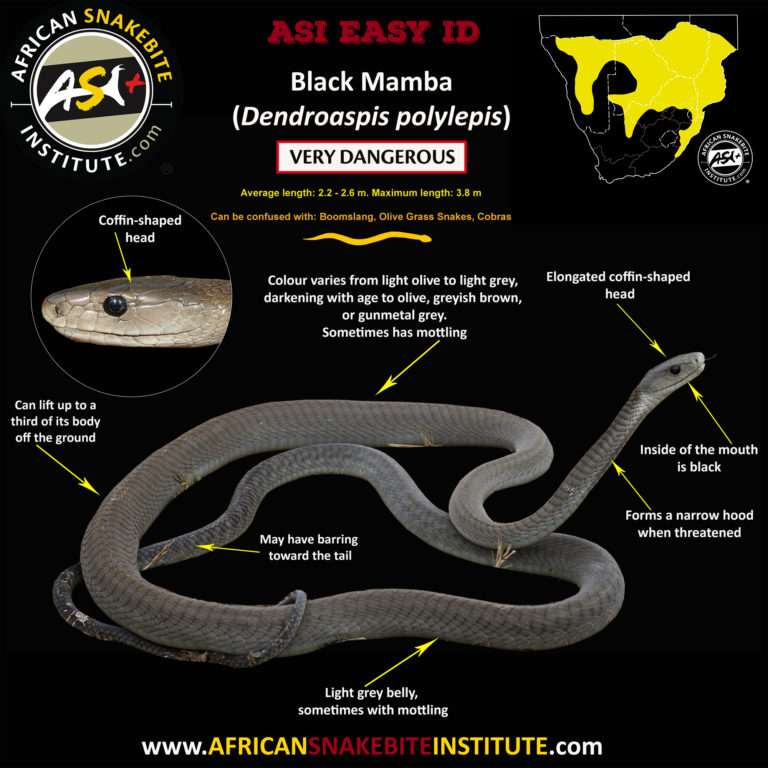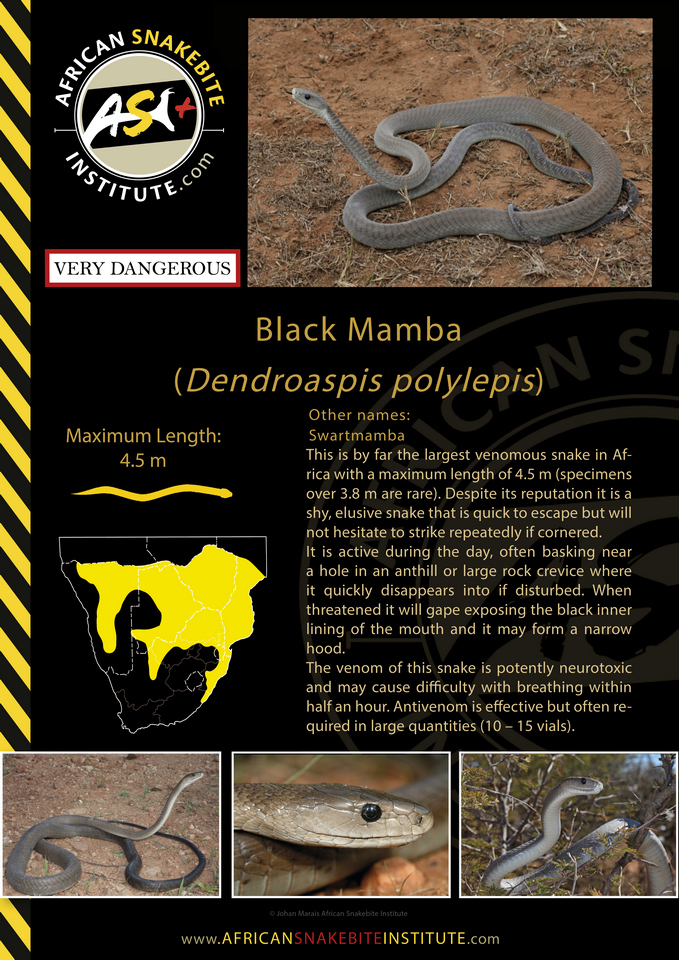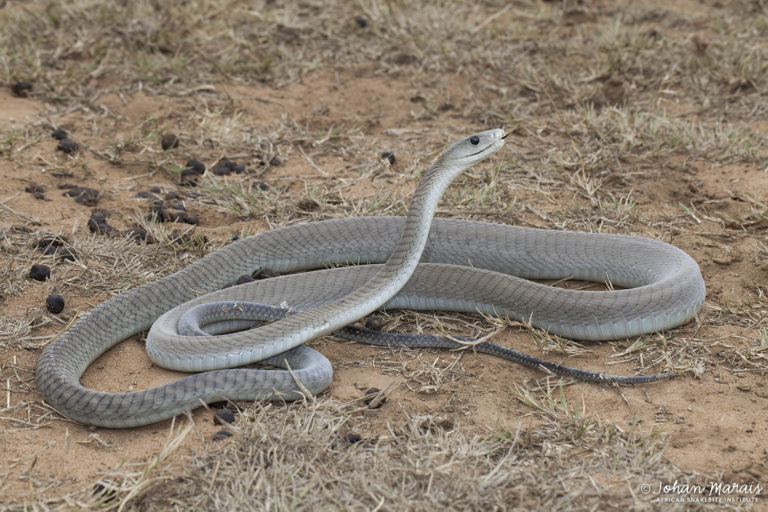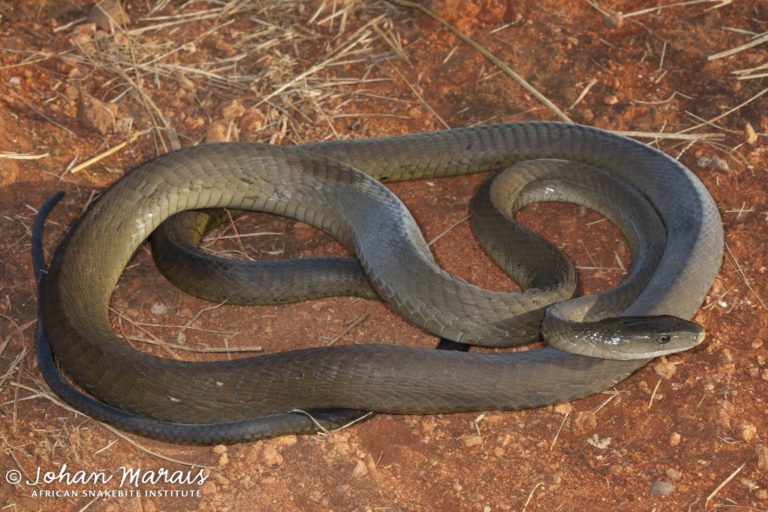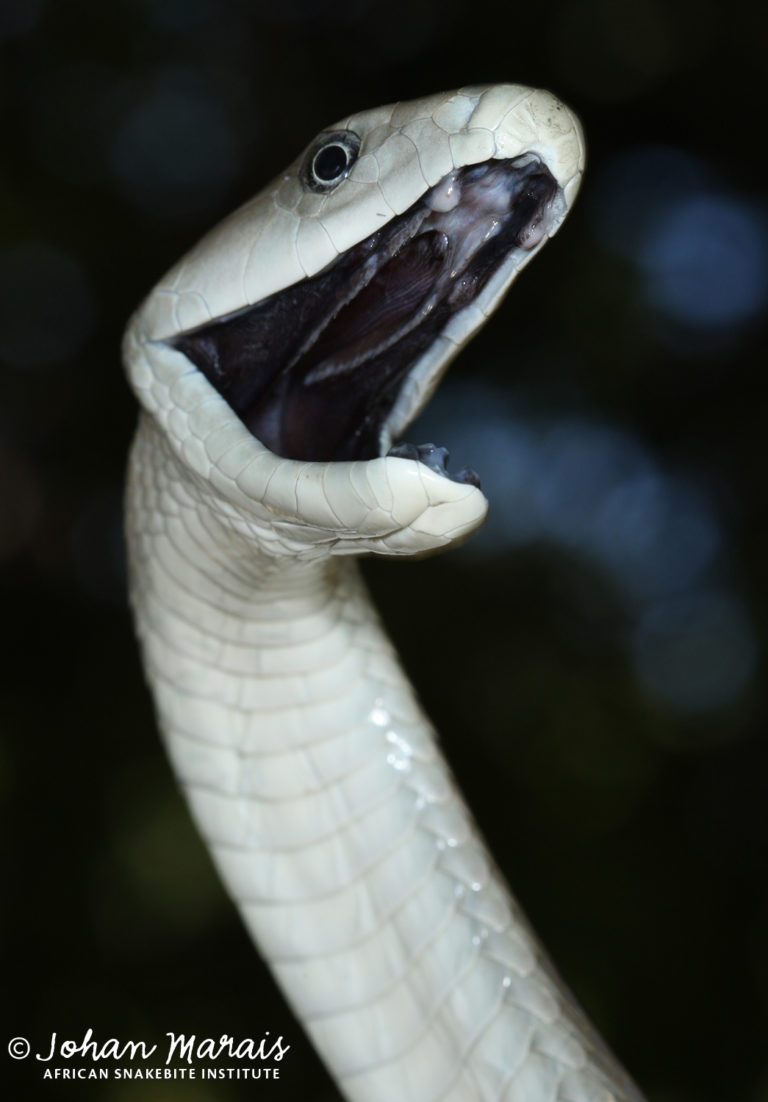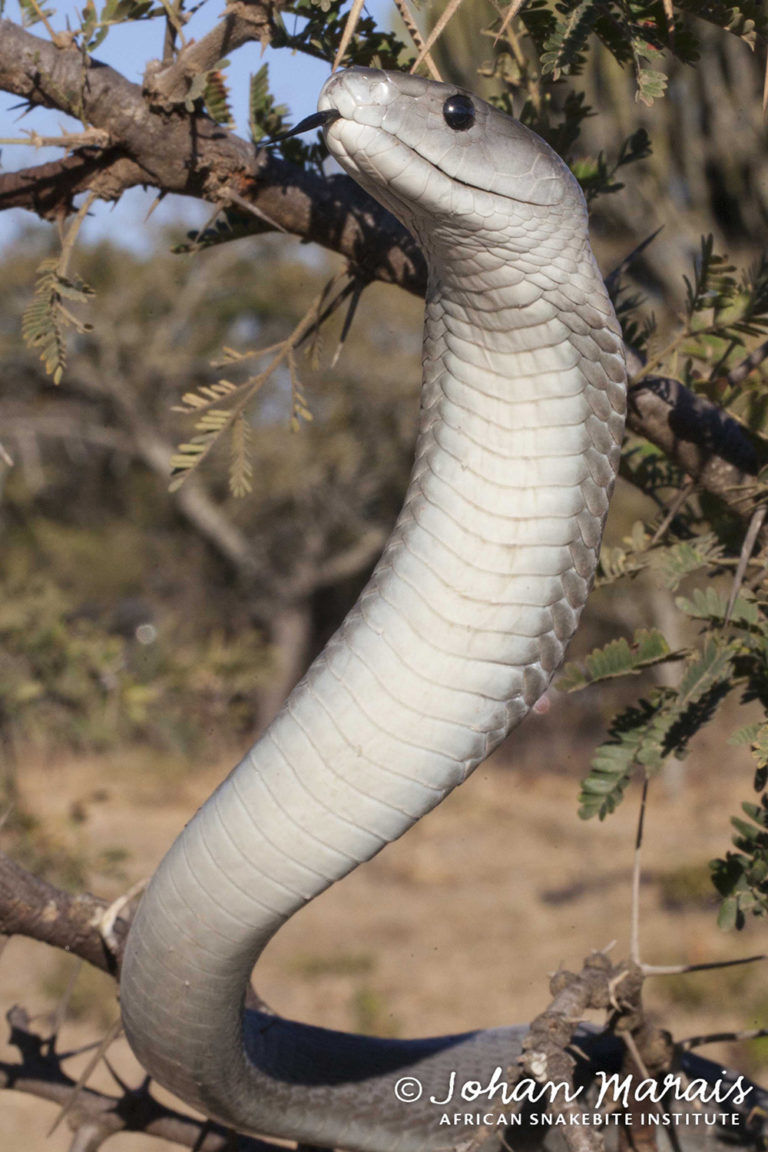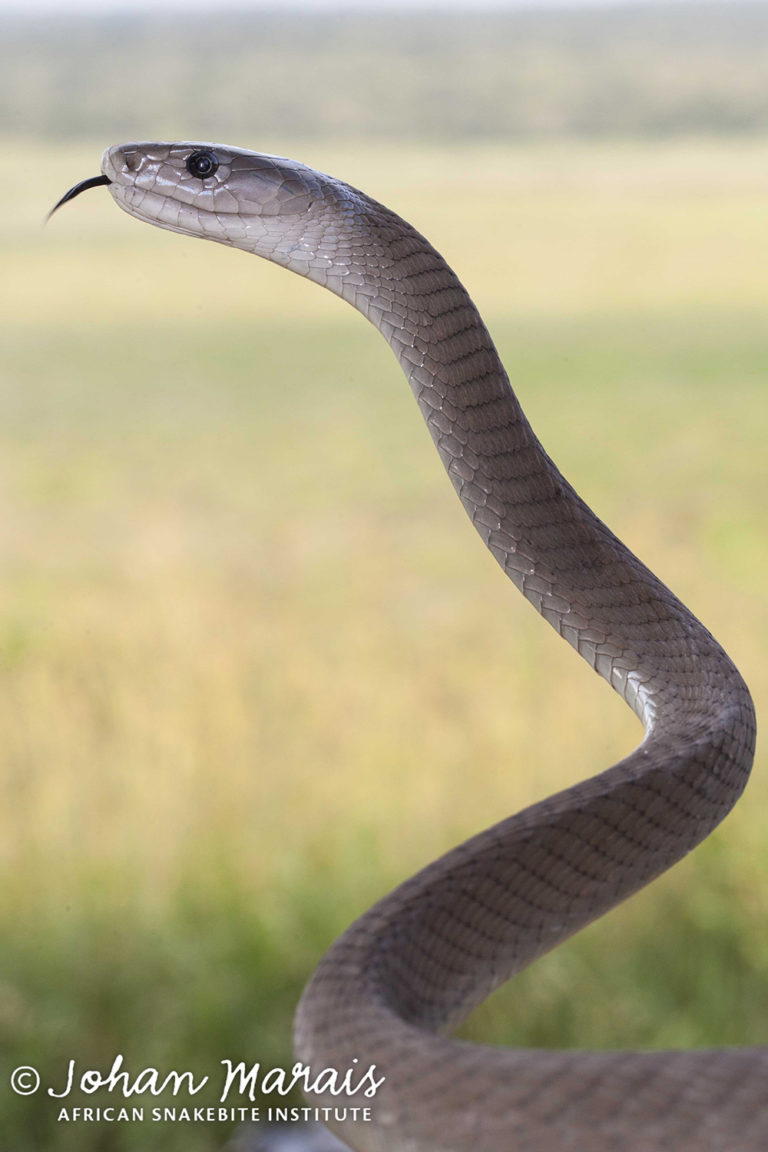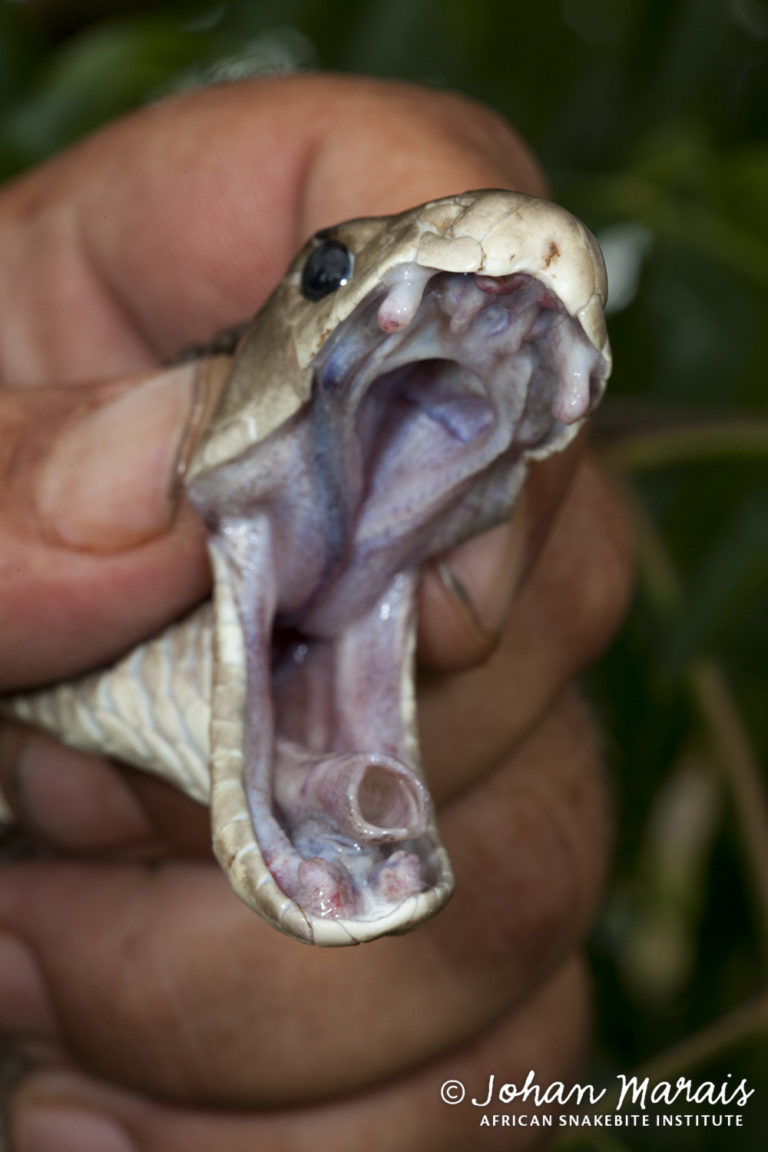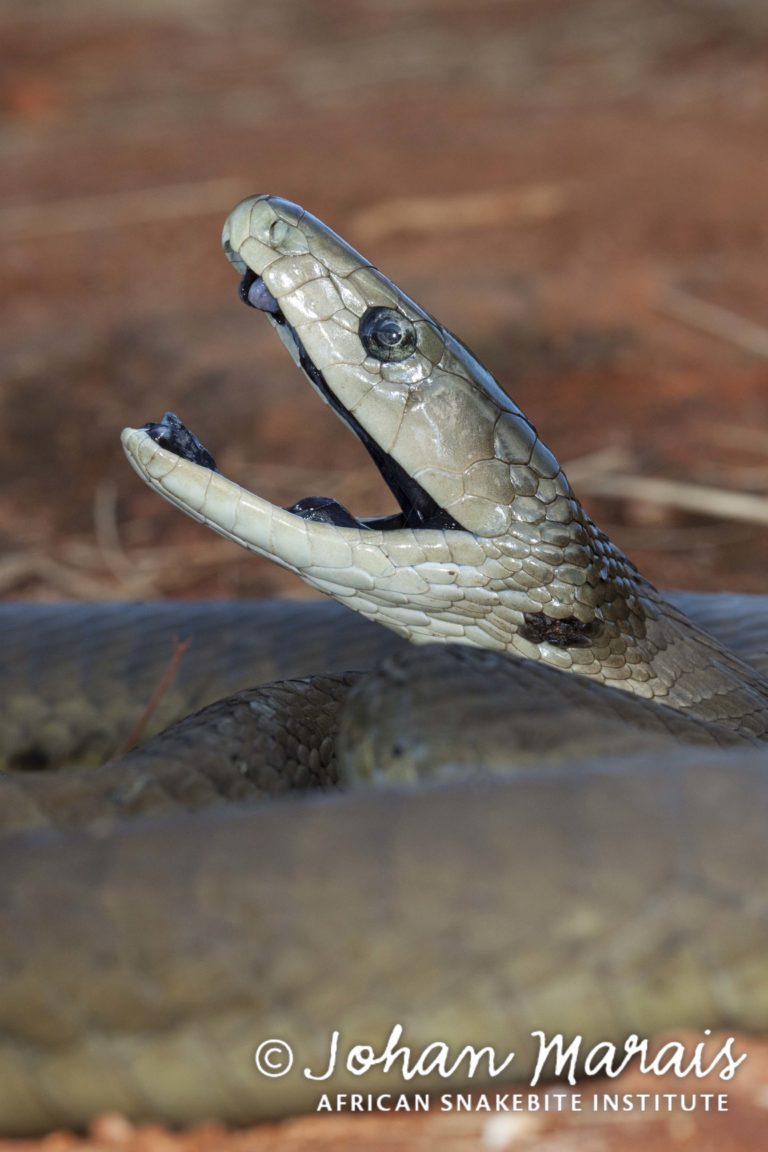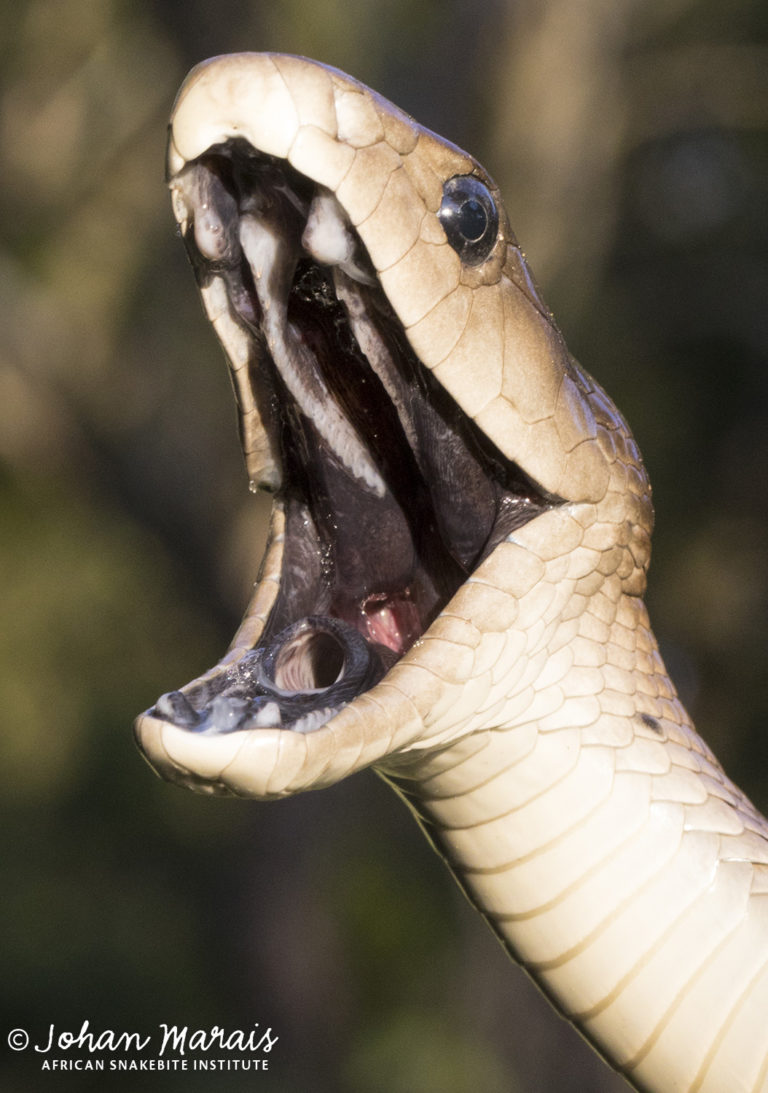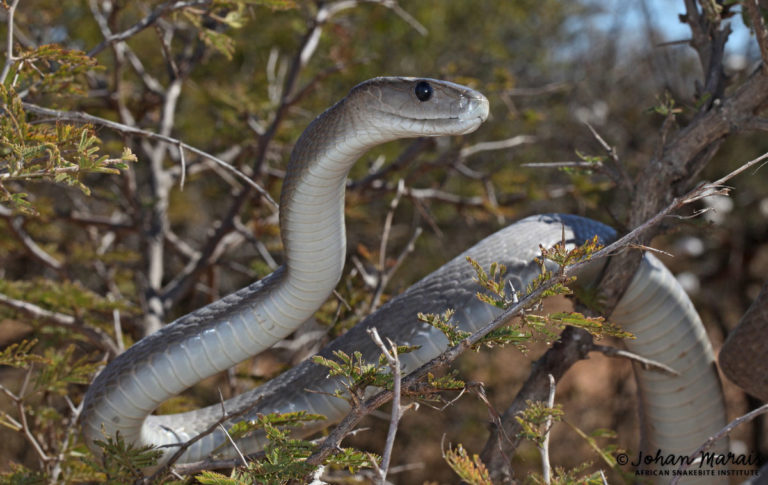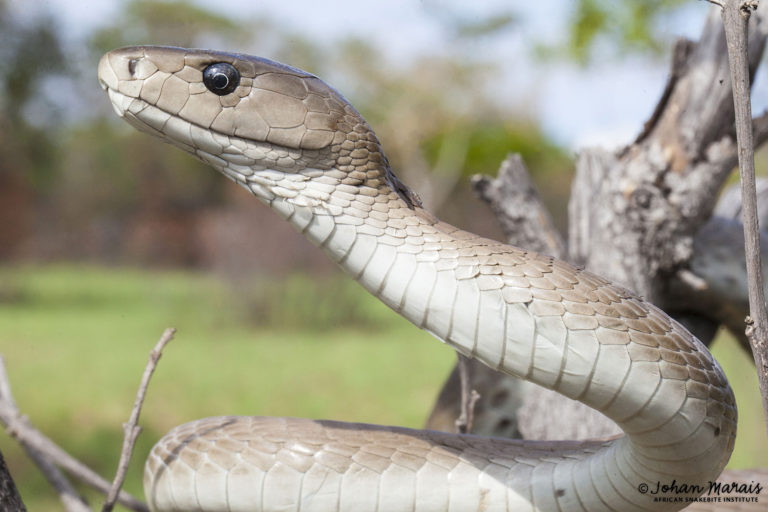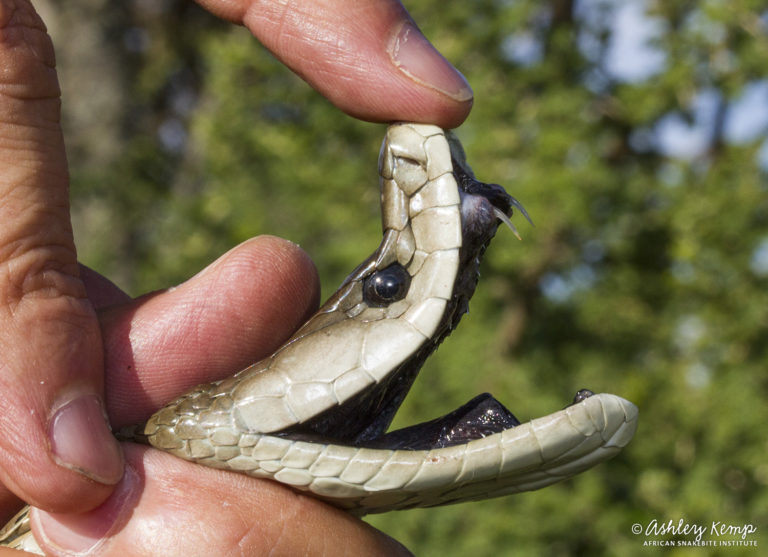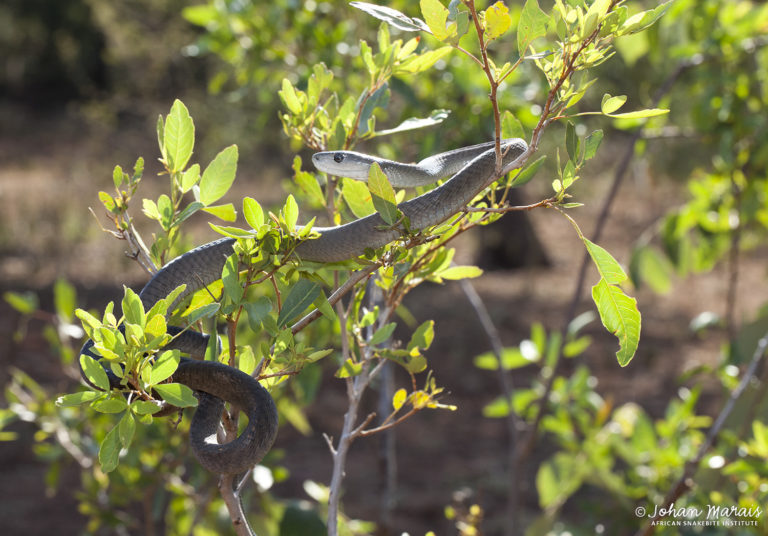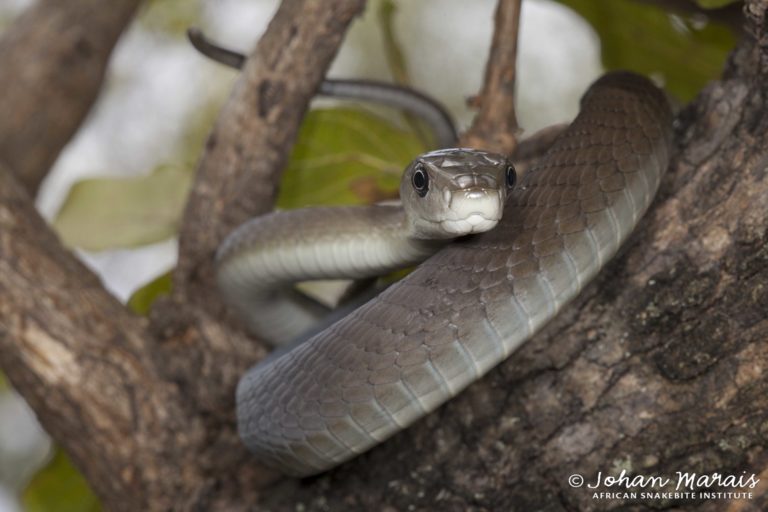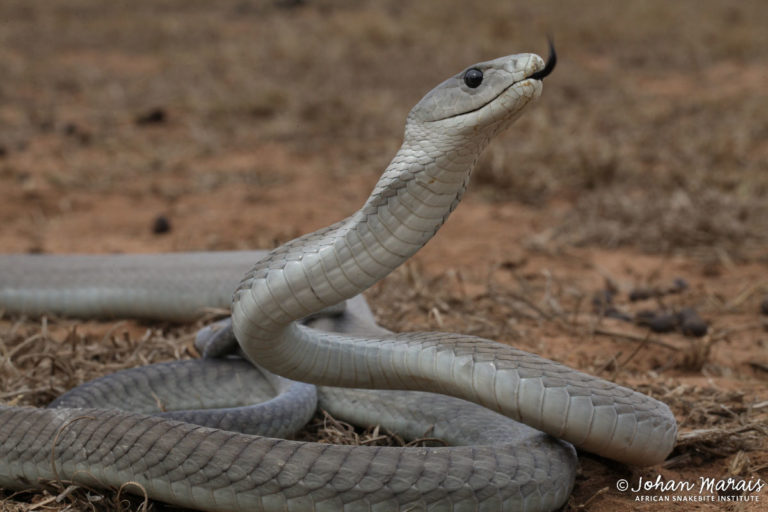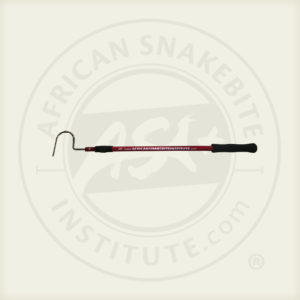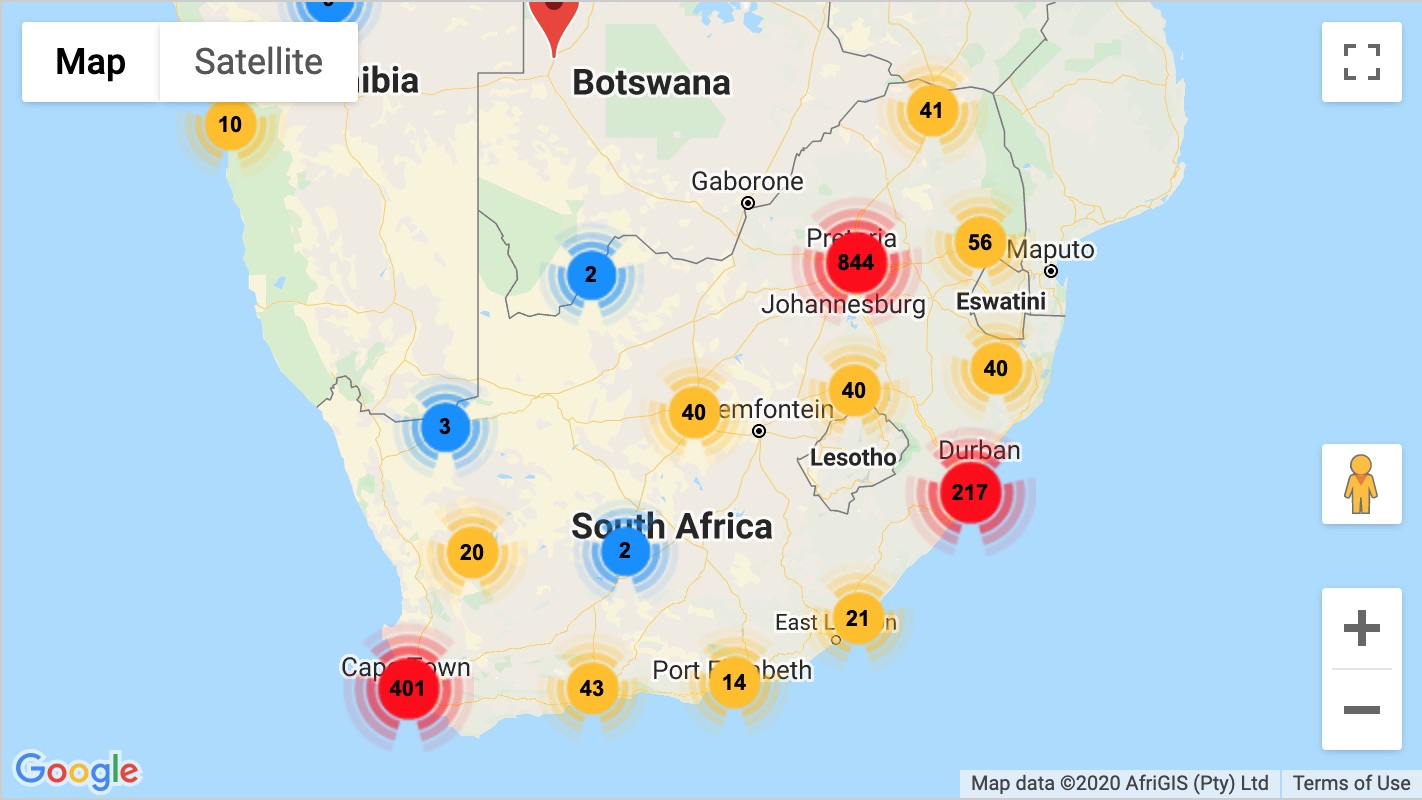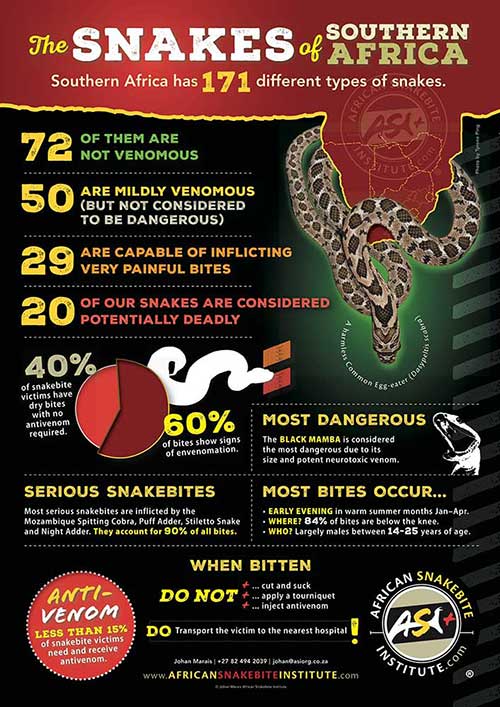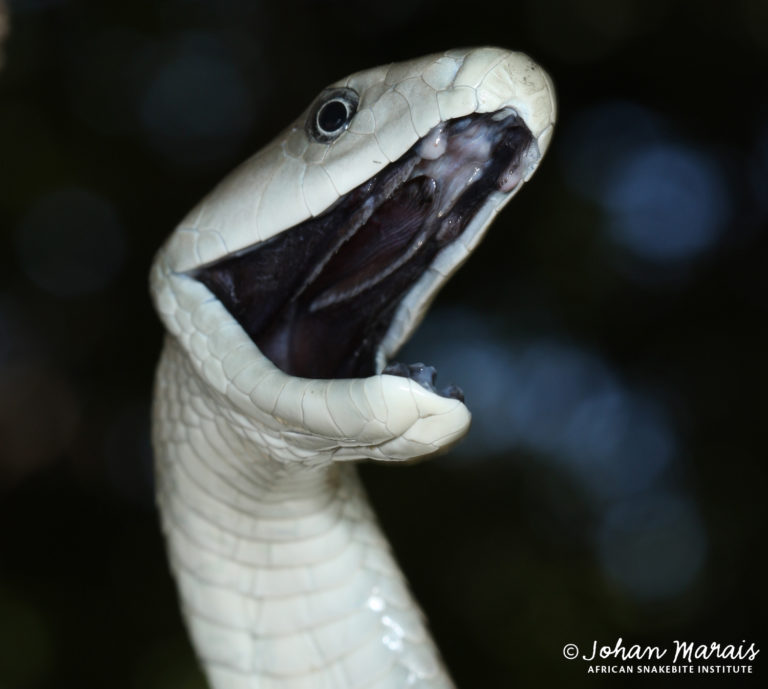
The notorious Black Mamba (Dendroaspis polylepis) is often said to be the deadliest snake in the world and with good reason. It is a large and active snake that will move quite fast with as much as a third of its body off the ground. If cornered, it is known to strike more than once and in quick succession, injecting large quantities of very potent neurotoxic venom. Human deaths, in untreated bites, could take anything from 3 – 16 hours, but in serious bites victims could experience severe breathing problems in less than half an hour.
The Black Mamba is, in fact, not an aggressive snake and is very quick to avoid people if given the chance and bites from this snake are quite rare, even more so if compared with bites from snakes like the Mozambique Spitting Cobra and Puff Adder.
Both at home in trees and on the ground, the Black Mamba is active during the day, when it hunts for prey such as rodents, squirrels, hyrax, small antelope and fledgling birds. It is fond of basking and will often return to the same site daily. But if danger is present, it will disappear quickly into dense bush or down the nearest hole or rock crevice. The Black Mamba lays 6-17 eggs in summer, and the young, when they hatch, measure 40-60 cm in length and are venomous from the moment that they emerge. Juvenile mambas are very nervous and seldom seen and are said to grow rapidly in the first year, even reaching a length of 2 m. Males often engage in fighting during the mating season and are seen twisting around one another in an attempt to wrestle their opponent to the ground.
Colour
The Black Mamba is rarely black in colour. Its overall colour is usually olive green, dark olive, greyish brown, light grey or gunmetal grey, sometimes with darker mottling that may form oblique bars down the sides. But some old individuals may well be very dark in colour and from a distance may appear to be black. Juveniles are mostly light to medium grey in colour with a light belly. The inside of the mouth of a Black Mamba is usually a dark inky black but individuals with a light coloured mouth may also be encountered. When threatened, the snake is quick to draw back into a striking position, may form a narrow hood and open the mouth to expose the black interior.
Length
Much has been said about the length of the Black Mamba and social media is inundated with reports of monster mambas that were either killed or captured and supposedly accurately measured.
The size of the Black Mamba is often exaggerated and stories of 6 m Black Mambas are commonplace. In the literature, it is said to reach a maximum length of 4.5 m but in the past 30-odd years the longest Black Mamba accurately measured was 3.8 m long.
In some cases a piece of string was used to measure the snake, or the width of the road or even markers in the field which may then be measured later. Over the years there has been a great deal of research done on the Black Mamba, not just in South Africa but throughout its range. Specimens have been accurately measured by a number of scientists and some specimens have been deposited into museum collections where they are still available for further scrutiny.
In Broadley’s FitzSimons Snakes of Southern Africa, internationally recognised as an authoritative book on the snakes of Southern Africa, Broadley mentions that the Black Mamba may exceptionally reach 4.3 m in length ‘in exceptional cases’. In Pitman’s Snakes of Uganda he puts the maximum length at 3.048 m but also says that this snake ‘may exceptionally reach 4.267 m’. Ionides (the Snake Man) who probably caught more snakes in Africa than anyone else that I know of, mentions a maximum length of 3.2 m in Tanzania. In Dangerous Snakes of Africa by Spawls and Branch they speak of unsubstantiated reports of a 4.3 m Black Mamba while Visser and Chapman, in Snakes and Snakebite (1978) say that the Black Mamba may exceptionally reach 3.6 m. In A Field Guide to Snakes and other Reptiles of Southern Africa, Bill Branch mentions 4.3 m as an exceptional length.
While monster mambas of around 4.3 m or even longer may well have been seen in the past, such large individuals are no longer seen, just as the big tuskers amongst the elephant are something of the past.
It is often difficult to get an accurate measurement of snakes in the wild, particularly when the animal is curled up or crossing roads at a fast pace.
Myths
One theory as to how the Black Mamba got it name is that it was initially called a black-mouthed mamba which, over time, became shortened to black mamba. Having gone through a lot of the older literature and the works of Eugene Marais who wrote extensively (and inaccurately) about mambas, my guess is that some old dark individuals were thought to be black hence the common name.
The Black Mamba is also said to be extremely aggressive and there are many reports of mambas chasing men on horseback. The aggressive part and the bit about mambas chasing people are simply not true. Another popular myth is the one of the mamba hanging from a tree, and then biting and killing five cows as they enter the kraal. While it may not be impossible for a Black Mamba to kill a cow or horse, it rarely happens. And to kill five cows is highly unlikely both because of the venom yield of this snake and the fact that it is just not in their nature to kill large bovines that pose no real threat to a mamba.
Then there is the mythical Ndlondlo – a massive Black Mamba with a feather on its head that moves incredibly fast and strikes like lightning. It moves so fast that the feather causes a whistling sound. At times Ndlondlo will hide in the bush and cry like a baby – should you go into the bush to investigate you risk getting killed by this snake. According to the myth it is by far the most dangerous snake in the world. I spoke to Fortune Sibaya, reptile keeper at DumaZulu Lodge near Hluhluwe in Zululand and he has quite an interesting take on this mythical snake: The great King Shaka used to have a large feather in his head gear as did his warriors and Fortune believes that they were called Ndlondlo. They were fearless warriors as was their king and their reputation was eventually passed on to the Black Mamba. Another theory is that someone may have observed a mamba what was busy shedding and saw a piece of skin above the head that resembled a feather. Either way, Ndlondlo has never been seen.
There is also the mythical Berg Mamba in Namibia – a secretive snake that is rarely seen but it gets so big that when it approaches a jackal-proof fence with holes big enough to put your fist through, the snake has to go over the fence otherwise it may get stuck.
Aggression & Venom
Regarding the aggression of the Black Mamba and its deadly bite. Dr. Darryl Wood and some of his colleagues recently brought out a paper on snakebite in Zululand – they analysed 879 snakebites over a five year period where victims ended up in hospital. Only 5 bites were clearly neurotoxic and in all likelihood Black Mamba bites. That averages out at one bite per year – again clearly not what one would expect from an aggressive snake which is prolific in Zululand.
That it has a very potent neurotoxic venom is not in doubt. The maximum venom yield of a large Black Mamba is often given as 400 mg but is probably closer to 280 mg. Around 15 – 20 mg of venom is required for a fatal bite on a human. Despite the deadly reputation of this snake there is a surprising number of victims that survive its bite but in severe cases large dosages of polyvalent may be required. Whereas the average treatment would require 10 – 15 vials one patient in Zululand needed 40 vials and recovered fully.
Although most snakebite deaths in South Africa are as a result of Black Mamba and Cape Cobra bites, treatment is very effective and often life-saving. It is however critically important to get victims to a hospital and onto a ventilator (if required) or to make use of a bag valve mask if the victim is not breathing.
Although this is snake has a reputation as being the most dangerous snake in Africa, it is actually a shy and elusive snake that will endeavour to avoid humans at all costs.
